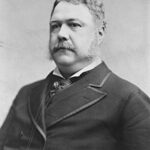The Naval Crisis of 1881
When Chester A. Arthur assumed the presidency, America’s navy was in shambles. The fleet consisted primarily of obsolete wooden vessels from the Civil War era. Many ships were rotting at anchor, completely unsuitable for modern warfare. ⚠️ Foreign observers openly mocked the American naval forces as a “collection of antiquated experiments.”
Arthur’s Vision for Naval Modernization
Arthur recognized that America’s growing industrial economy required naval protection for international trade. He championed the construction of modern steel warships to replace the deteriorating wooden fleet. 📊 Congress initially allocated $1.3 million for four new vessels in 1883. The president personally advocated for advanced armor plating and modern armaments.
The White Squadron’s Revolutionary Design
Arthur’s naval modernization program produced the famous “White Squadron” – America’s first steel warships. These vessels featured cutting-edge technology including steel hulls, modern propulsion systems, and advanced weaponry. 💰 The investment totaled over $35 million by 1889, representing the largest peacetime naval expenditure in American history.
Impact:
Immediate Maritime Transformation
Arthur’s naval modernization immediately elevated America’s international standing. The White Squadron’s debut at the 1893 World’s Columbian Exposition showcased American industrial prowess to the world. Foreign naval experts praised the vessels’ innovative design and superior craftsmanship. 🌍 European powers began viewing the United States as a serious maritime competitor for the first time.
Foundation for Global Naval Power
The steel warship program established America as a major naval force by the 1890s. Arthur’s investment enabled victories in the Spanish-American War just fifteen years later. The modernized fleet protected American merchant vessels and overseas trade routes. 🔥 By 1900, the U.S. Navy ranked third globally, behind only Britain and France.
Long-term Strategic Consequences
Arthur’s naval modernization created the foundation for American global leadership in the twentieth century. The program demonstrated how strategic military investment could transform national power projection capabilities. Future presidents built upon Arthur’s steel warship legacy, eventually creating the world’s most powerful navy. The decision proved that bipartisan support for defense modernization could yield transformative results for American influence worldwide.
